Page 3 of 5
Re: Queyras region 2020
Posted: Fri Aug 21, 2020 11:59 am
by Medard
Col d’Agnel 1st day. 23-07-2020
Varia, Alpine Grayling, now what will Lady Luck offer at the Col d’Agnel today ?
https://jamesgibbs6929.zenfolio.com/
Continued.
A male Cynthia's Fritillary (Euphydryas cynthia) every ones favourite, in better condition than I expected.
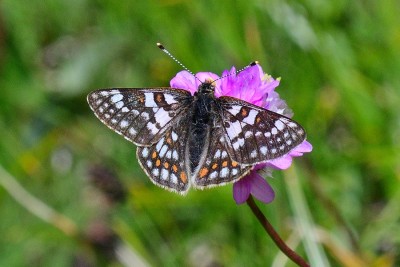
- Col d'Agnel Cynthia's Fritillary
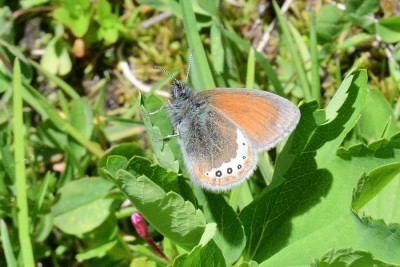
- Alpine Heath (Coenonympha gardetta)
Mountain Fritillary (Boloria napaea) or could it be Shepherd's Fritillary (Boloria pales) whichever it is its a was a exciting find.
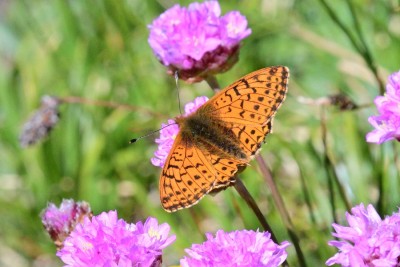
- Mountain Fritillary or could it be Shepherd's Fritillary
A worn ? female was busy laying eggs, she gave me a merry chase across rough ground.
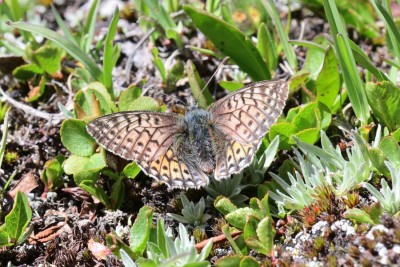
- A worn ? female
Definatly not worn ,female I presume , Boloria napaea or Boloria pales.
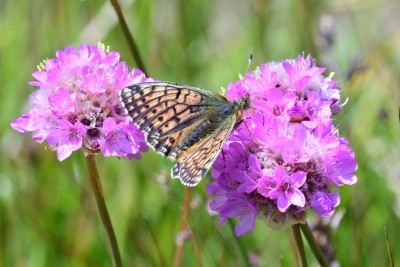
- Definatly not worn ,female , Boloria napaea or Boloria pales.
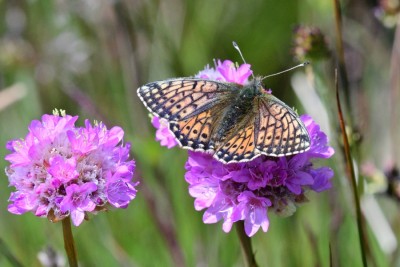
- Definatly not worn ,female , Boloria napaea or Boloria pales.
I am wondering if these are Mazarine Blue's (Cyaniris semiargus)
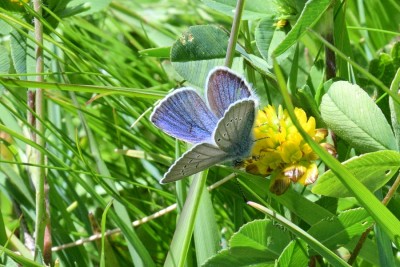
- Mazarine Blue's (Cyaniris semiargus) ???
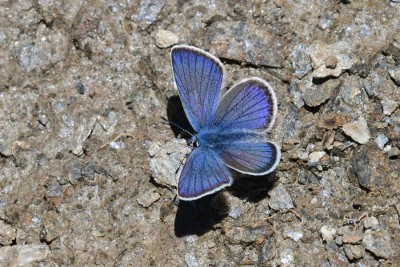
- Mazarine Blue's (Cyaniris semiargus) ???
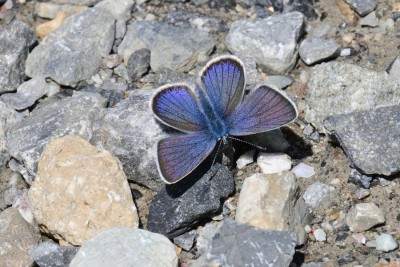
- Mazarine Blue's (Cyaniris semiargus) ???
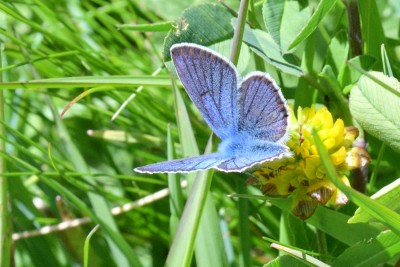
- Mazarine Blue's (Cyaniris semiargus) ???
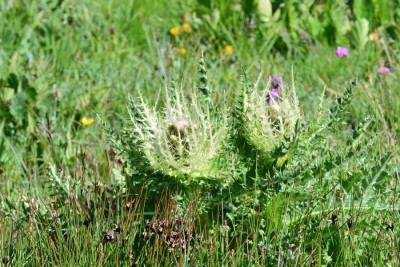
- Cirsium spinosissimum.
And the picture of the day is

- Definatly not worn ,female , Boloria napaea or Boloria pales.
Tomorrow edition, Col d’Agnel 2nd day. 24-07-2020 will it give me another first, I do hope so.
Re: Queyras region 2020
Posted: Fri Aug 21, 2020 12:54 pm
by petesmith
I would go with napaea for your frits, and definitely semiargus!
Re: Queyras region 2020
Posted: Fri Aug 21, 2020 9:12 pm
by David M
Agree with Pete. That female has a distinctive sheen, which marks her out as napaea.
Re: Queyras region 2020
Posted: Sat Aug 22, 2020 12:19 pm
by Medard
Col d’Agnel day 2.
The drive to the parking just below the summit of the Col was one of pure joy, no cyclists, no motor bikes, no cars, we had the road to ourselves, we sat and enjoyed the early dawn light touching the crests of distant mountains.
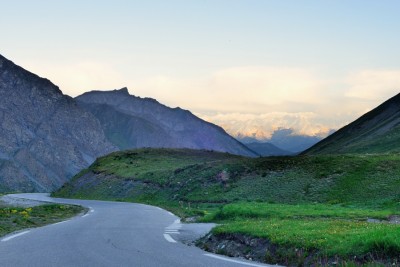
- Col d’Agne
Forgoing the traditional “ petite déjeuner française” we opted for a hearty British fry up, I then ventured out, but quickly returned to my home on wheels, a cold wind was blowing up the valley, it lowered the temperature considerably, shivering I had to resort to my fleece jacket, there was little sun, not at all promising. I made a brief foray out across the hill mid morning with little expectations and quickly beat a retreat to the van again shivering with cold.What to do ?
It continued cold, a short hailstorm came and quickly passed, a few very determined cyclists passed by, I remembered my days on the bike, I wished one who was visibly struggling “courage” he appreciated my friendly gesture.
After lunch I debated whether to leave but as a little sun was showing I decided on a last foray, the few ringlets seen rushed off, they had business elsewhere,never the easiest of butterflies, I stubbornly persisted, it paid off, I found a blue ,Eros Blue ? I do hope so, it will be another first,
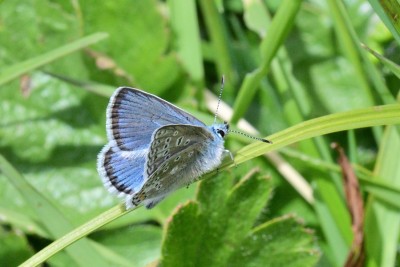
- Eros Blue (Polyommatus eros).
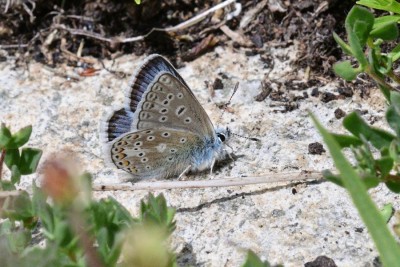
- Eros Blue (Polyommatus eros).jpg
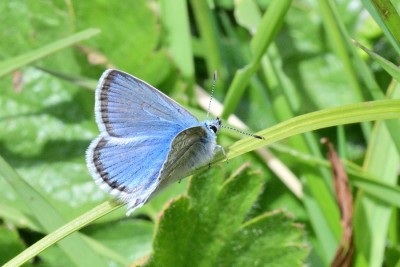
- Eros Blue (Polyommatus eros).jpg
soon after a motionless Fritillary, a Mountain Fritillary (Boloria napaea) ? perched on a yellow flower, I guess they were all cold, they gave me ample time for photos, it cheered me up.
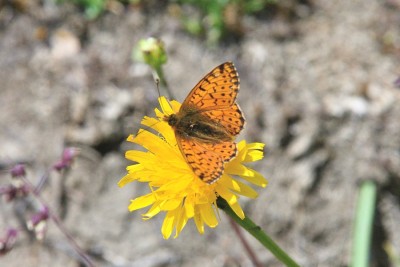
- Mountain Fritillary (Boloria napaea)
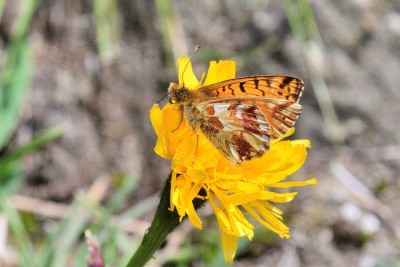
- Mountain Fritillary (Boloria napaea)
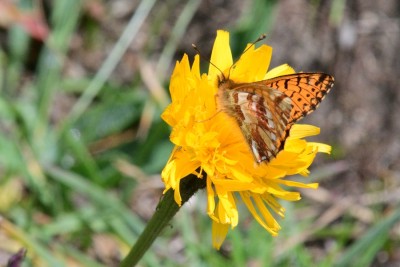
- Mountain Fritillary (Boloria napaea)
Now more confident in French trafics management technology we returned along our now familiar mountain road to Camping Gouret.
Tomorrow I have planned a return to l’Echalp that we had previously visited in 2017.
https://jamesgibbs6929.zenfolio.com
Picture of the day.
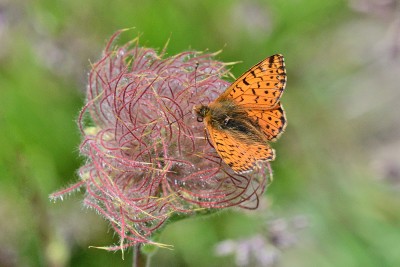
- Mountain Fritillary (Boloria napaea)
Re: Queyras region 2020
Posted: Sat Aug 22, 2020 1:26 pm
by petesmith
Nice Eros Blue there Jim! They are a lovely colour, aren't they? Col d'Agnel is a good spot for them, especially if you climb up the slopes a little higher - they can be quite abundant in a good year.
Re: Queyras region 2020
Posted: Mon Aug 24, 2020 11:21 am
by Medard
The drive to l’Echalp from our campsite is along a broad straight road, we passed through Abries, an attractive little village, and continued until we reached l’Echalp and then took the rough track to the location that we had first visited in 2017, where I had found my first Damon blue.
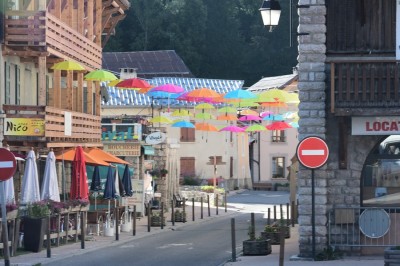
- Abries,
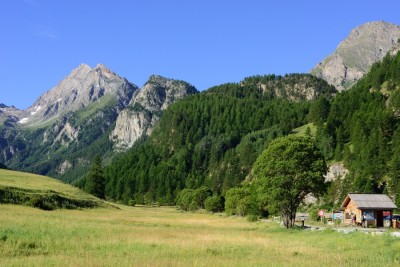
- l’Echalp
On my first visit I was excited to find my first Damon blue,
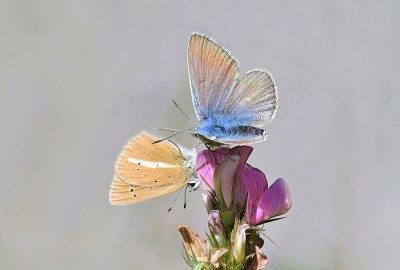
- Damon Blue (Polyommatus damon).
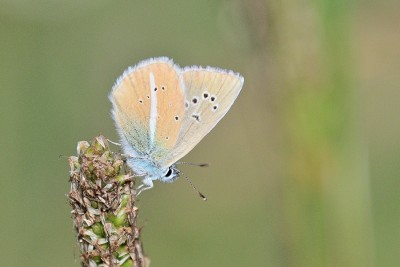
- Damon Blue (Polyommatus damon).
on today's visit they were everywhere, in the afternoon, a group numbered in hundreds had gathered in front of our van taking salts, mixed with Silver-studded-Blues and other species, elsewhere along the river bank there were groups of thirty plus.
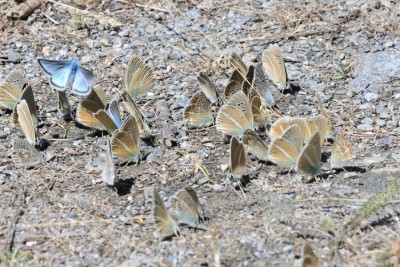
- Damon blue and friends.
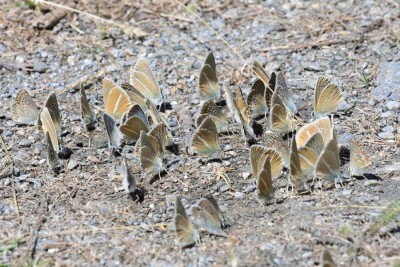
- Damon blue and friends.
Apollo and Small Apollo were seen but they were in rather a worn state, the river Guil that descends from the upper valley seems to be a home favoured by the Small Apollo it’s host plant Saxifraga aizoides (Yellow Mountain Saxifrage).being abundant on the sandbanks of the river, Fritillaries were well represented ,skippers were also numerous.
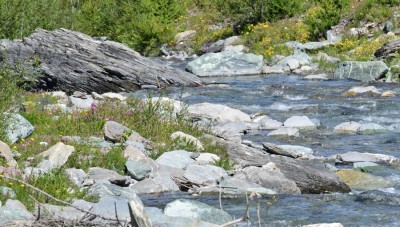
- River Guil.
This site was a pleasant location, a place just to sit, watch and to enjoy nature.
I decided to make a second trip the following day and explore further up the track to the upper car park.
More to follow including a Skipper challenge !!
https://jamesgibbs6929.zenfolio.com/
No apology's for showing four shots of this beauty. Female Scarce Copper (Lycaena virgaureae)
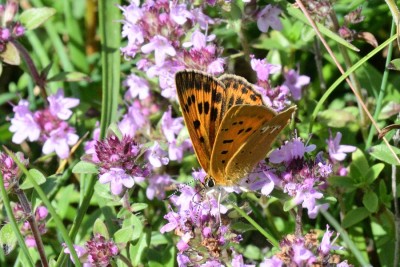
- l'Echalp Female Scarce Copper (Lycaena virgaur
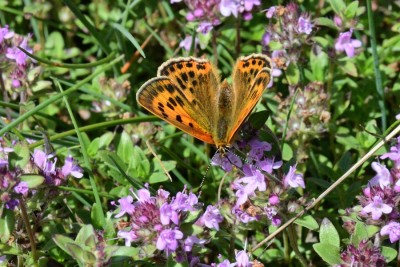
- l'Echalp Female Scarce Copper (Lycaena virgaur
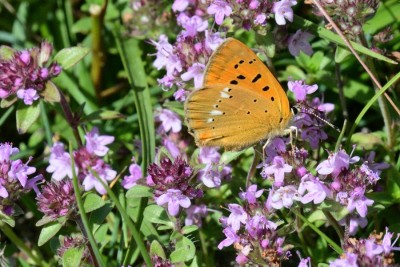
- l'Echalp Female Scarce Copper (Lycaena virgaur
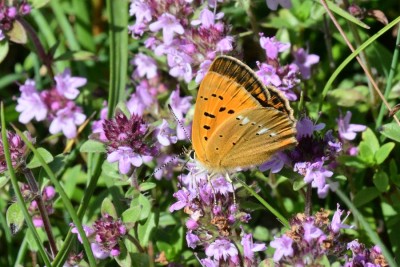
- l'Echalp Female Scarce Copper (Lycaena virgaur
Weaver's Fritillary (Boloria dia).Takes to the air.
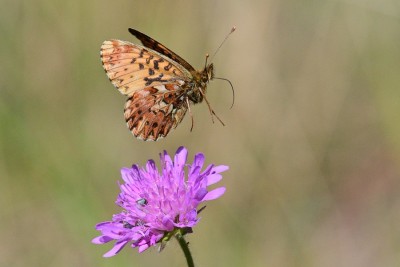
- Weaver's Fritillary (Boloria dia).
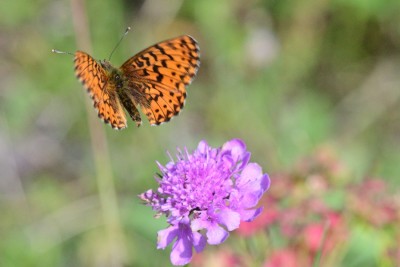
- Weaver's Fritillary (Boloria dia).jpg
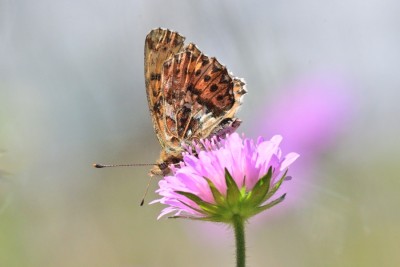
- Weaver's Fritillary (Boloria dia).
A Chestnut Heath (Coenonympha glycerion) joins the feast.
Re: Queyras region 2020
Posted: Mon Aug 24, 2020 8:13 pm
by David M
Glad you got your Eros Blue, Jim, and I just love the shots of the airborne Weaver's Fritillary.
Damon Blues can be around in terrific numbers if you time things right...and it looks as though you did.
I kind of envy you even when reading about the cold and the hailstorms. To see that peaceful image in the mountains as the sun was rising just fills me with joy. It must be a wonderful experience to have the place to yourself so early in the morning.

Re: Queyras region 2020
Posted: Tue Aug 25, 2020 7:36 am
by petesmith
Just out of curiosity, is anyone else seeing titania rather than dia in Jim's airborne fritillary?
Re: Queyras region 2020
Posted: Tue Aug 25, 2020 7:51 am
by Medard
Yes David La Roulotte does give us some advantages. camping sauvage at l'Echalp, early morning.
https://jamesgibbs6929.zenfolio.com/
Re: Queyras region 2020
Posted: Tue Aug 25, 2020 9:01 am
by Medard
Just out of curiosity, is anyone else seeing titania rather than dia in Jim's airborne fritillary?
Hi Pete, here are a sequence of shots that may help decide, hope it will clear up any doubts, I would be happy with either.
More to follow watch this space.
and another specimen
and for good measure Spotted Fritillary (Melitaea didyma)
Re: Queyras region 2020
Posted: Tue Aug 25, 2020 9:51 am
by Roger Gibbons
I don't think there can be any doubt that it is titania, even allowing for the fact that dia is not an altitude species (though I have seen it as high as 1320m). It is the nominate form, not the subspecies cypris. I have seen it said that the nominate form and cypris do not fly together, a theory not entirely supported by a photo I have of them in copula.
The forewing mark in discal s1 looks rather odd as the two marks are joined, so this one is a slight aberration.
Roger
Re: Queyras region 2020
Posted: Tue Aug 25, 2020 10:29 am
by petesmith
Roger Gibbons wrote: ↑Tue Aug 25, 2020 9:51 am
I don't think there can be any doubt that it is
titania
Roger
Agreed!
Re: Queyras region 2020
Posted: Tue Aug 25, 2020 11:27 am
by Medard
Your combined experience and powers of observation are amazing its good to have your backup ,thanks.
jamesgibbs6929.zenfolio.com
Some more Fritillaries seen at this location, I do hope get a few right
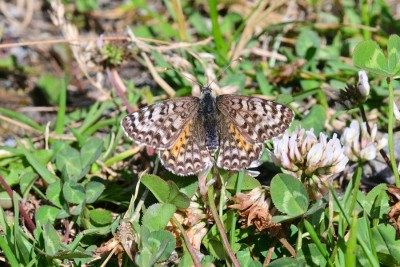
- Spotted Fritillary (Melitaea didyma).
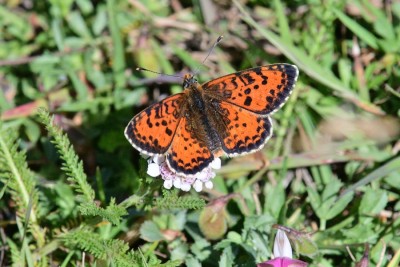
- Spotted Fritillary (Melitaea didyma)
Picture taken at the upper car park
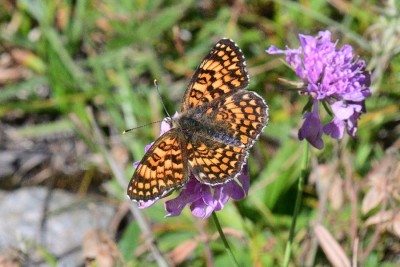
- Knapweed Fritillary (Melitaea phoebe).1800m
Niobe puddling ?
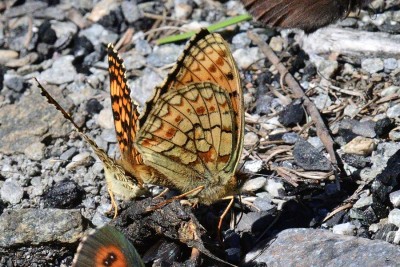
- Niobe Fritillary (Argynnis niobe).
Fairly confident on this one.
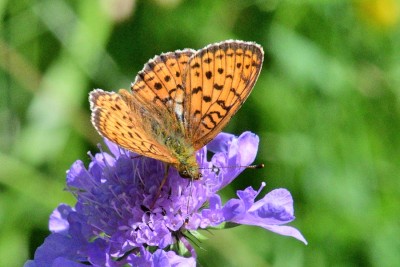
- Echalp Lesser Marbled Fritillary (Brenthis ino).
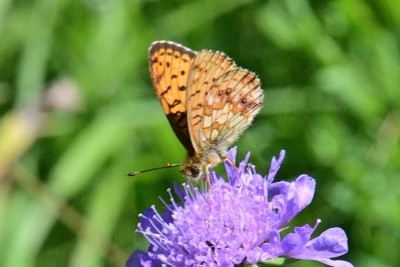
- Echalp Lesser Marbled Fritillary (Brenthis ino).
Dark Green Fritillary (Argynnis aglaja)
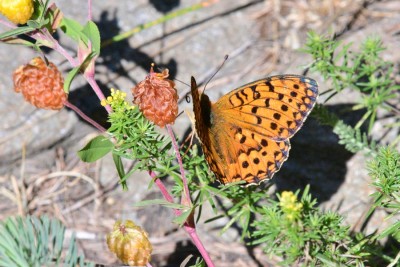
- Dark Green Fritillary (Argynnis aglaja)
I shall pass on this one, not a bad haul on such a small area. 1730m
Picture of the day.
Re: Queyras region 2020
Posted: Tue Aug 25, 2020 12:07 pm
by David M
Agree with your Lesser Marbled Fritillary, Jim, and your last one (prior to the pic of the day) looks like a faded False Heath.
Re: Queyras region 2020
Posted: Wed Aug 26, 2020 9:55 am
by Medard
Re: Queyras region 2020
Posted: Wed Aug 26, 2020 1:15 pm
by Roger Gibbons
I'll express a view, sticking my head above the parapet, that the Pyrgus undersides are carlinae. The uppersides are too worn to give any meaningful clue. Could possibly be carlinae.
For the blue, I would suggest argus rather than idas.
Roger
Re: Queyras region 2020
Posted: Wed Aug 26, 2020 2:37 pm
by David M
Thanks for providing proof that Glandons
do actually nectar, Jim.

Your
erebia looks like
euryale again to me.
Re: Queyras region 2020
Posted: Wed Aug 26, 2020 3:17 pm
by Medard
Thanks for providing proof that Glandons do actually nectar,
My pleasure David.
More interesting pictures to come tomorrow that I hope you will enjoy.
Re: Queyras region 2020
Posted: Wed Aug 26, 2020 10:21 pm
by Matsukaze
I'm greatly enjoying these photos, particularly those of the airborne fritillaries. I don't have anything near this quality, but here is a Weaver's Fritillary taking flight.
(S of Digne, 1300m, May 2009)
Re: Queyras region 2020
Posted: Thu Aug 27, 2020 8:21 am
by Medard
I'm greatly enjoying these photos, particularly those of the airborne fritillaries.
Thanks for your support Matsukaze, much appreciated.